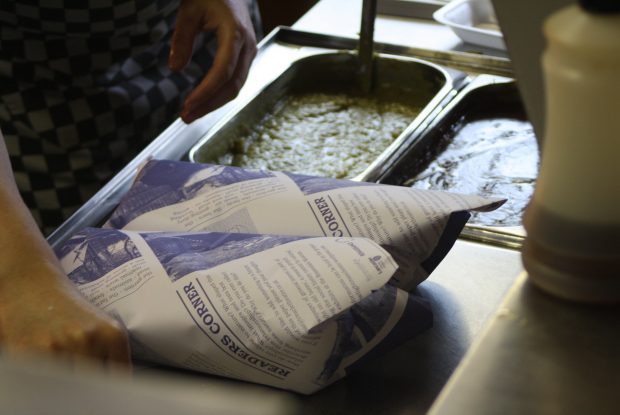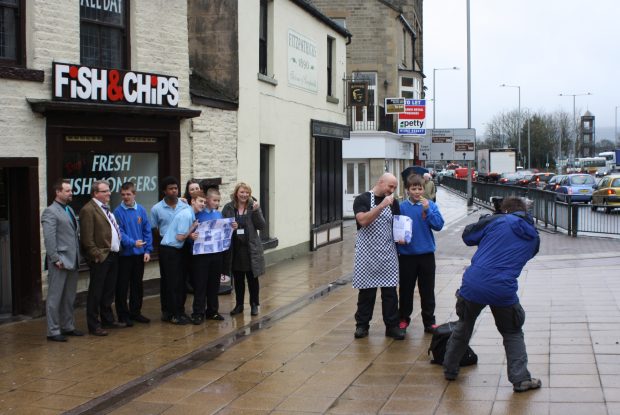Between August 2010 and April 2011 we were invited by Creativity Works and the Rossendale Museum to join the ‘New light on old bones‘ collaborative research team, looking at how the perception and presentation of natural history collections as social history is a legitimate and potentially rewarding curatorial approach. We were asked to explore ways in which this research might lead to new creative strategies for museum interpretation and visitor interaction.
The Museum Monthly
On the 1st of April we published the first ‘Museum Monthly’, a newspaper of general interest used at Tony’s Fresh Fishmongers in Rawtenstall to wrap up the fish & chips. Each month a collage of texts and images was selected by a group of enthusiasts or young people in Rossendale, that in some way reflects their relationship to nature. This information was then compiled to create a limited edition newspaper that playfully linked the museum with the local community, while extending and contextualising the New Light On Old Bones research.
We felt that it was important to take a look at today’s attitudes alongside historical analysis and research, as only then can we start to understand how things may have changed, and how our perception and understanding of historical contexts is informed by contemporary contexts and attitudes. We wanted to spend time looking at current parallels to some of the impulses that NLOB research team suggest may have led to the collection and presentation of the natural history collection in Rossendale.
How does our current (social) condition affect the way we relate to and value the natural world? Do we still collect and archive nature in the same way that we have in the past? If the collection and display of nature, and a fascination with the exotic, was a response to life and a reflection of social values during the industrial revolution, then what are the contemporary equivalents? What is the new exotic? What is now valued in a similarly nostalgic or romantic way? Has a nostalgic view towards nature and rural life within an industrial age, been superseded by a nostalgic view towards the idea of community in today’s semi-urban Lancashire, or even, for some, by a sense of nostalgia towards the industrial period?
When the Rossendale Museum first opened it was referred to as a ‘museum of general interest‘, housing and presenting predominantly contemporary exhibits that revealed, and politicised, something about the world and attitudes of the time. Today the majority of the museum is devoted to the display of historical artifacts, perceived and experienced as a site that preserves and documents the past. With the Museum Monthly we wanted to start challenging this perception, suggesting that the role of a museum, including a museum that specialises in social or natural history, should be as much about looking at and studying the present than the past. In many ways it already is, in terms of how a visitor’s experience might lead to reflection on one’s situation and the human condition, but it seems that traditional research and curatorial processes sometimes bypass their own subjective position, or that of the ever-changing viewer. If we root our curatorial response in the present, it will help us connect and make the collections feel relevant. Our understanding of today’s enthusiasts, collectors and archivists will inevitably inform the way one chooses to expand upon the existing NLOB research and engage with the local community.
We’d like to thank the students at Belmont School, local mountaineers Diana Maddison and Robert Macdonald, The East Lancashire Railway Preservation Society and Incredible Edible for their contributions, and Orbital Design for sponsoring the project.
Downloads
museum monthly #1 (Belmont School)
museum monthly #2 (Diana Maddison and Robert Macdonald)
museum monthly #3 (The East Lancashire Railway Preservation Society)
museum monthly #4 (Incredible Edible)




